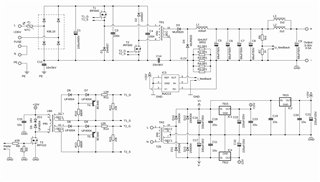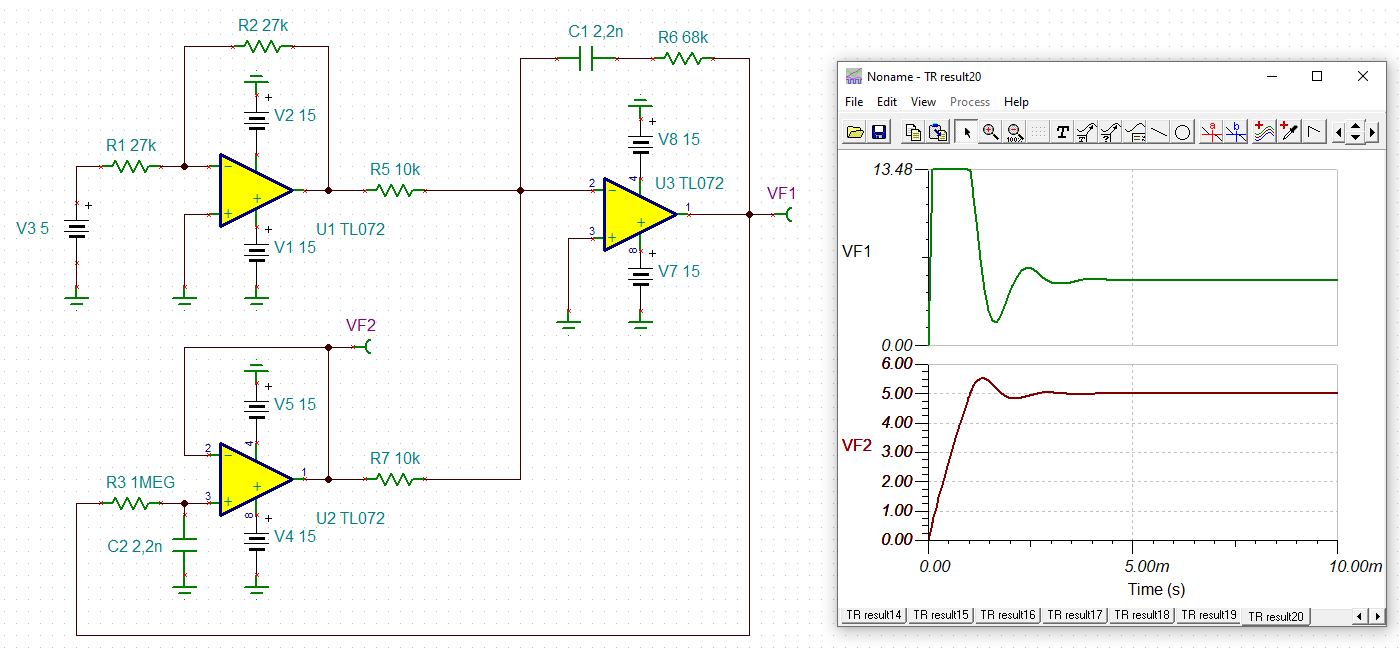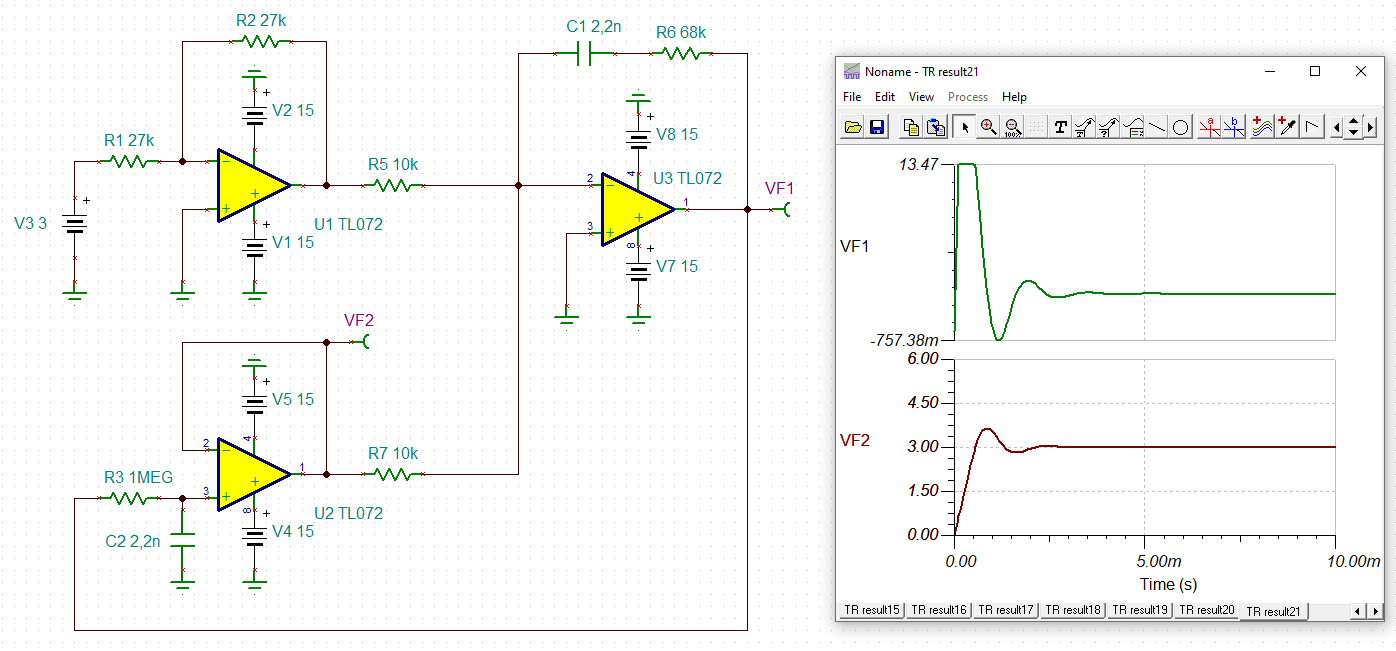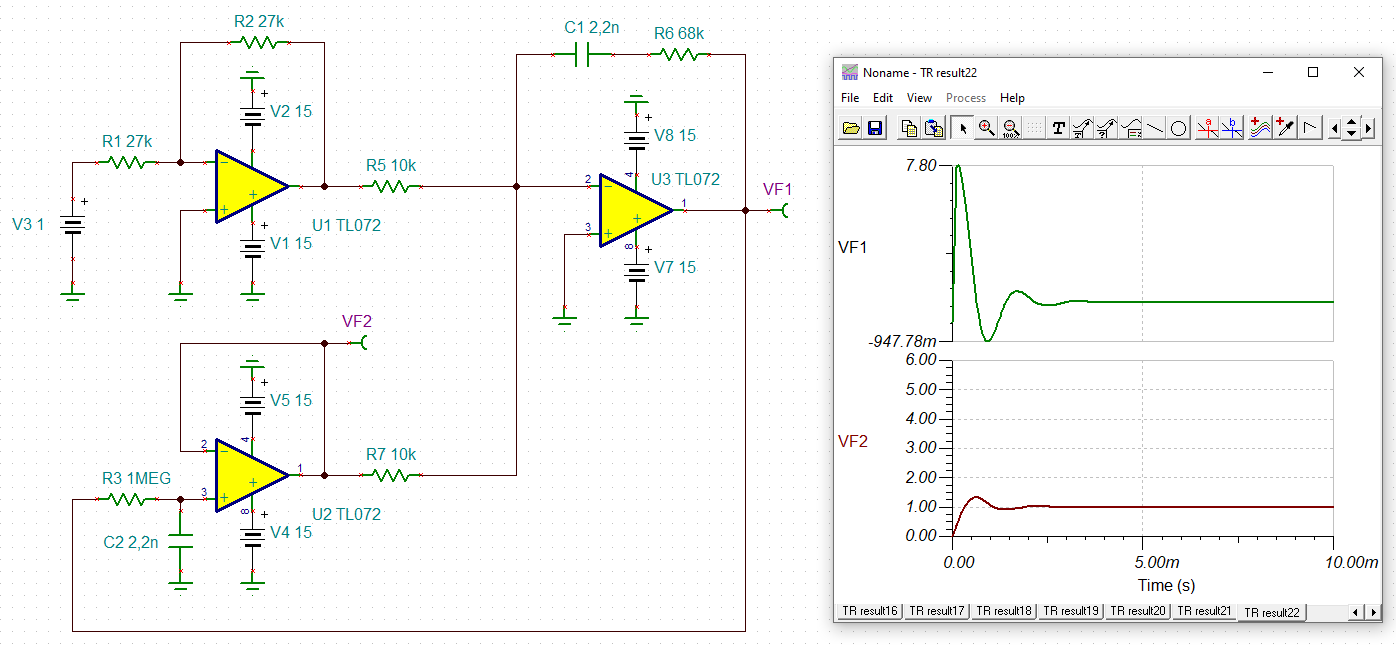I found a control circuit which consists of several TL072D in which I could not understand its operating theory, so ask you for technology supports.
there are parts of understands for me and some queries below:
1. About the required voltage and U-feedback. The R18/ R21 are a summing networks, that and IC5A will compose a inverting summer with PI controller. I confused how the u-feedback can be synchronously changed by adjusting the P1.Should the u-feedback be follow or equal to the p1 voltage value ( means the voltage of u-feedback equal to voltage of P1 adjusted) ? Might the IC4A, IC4B and IC5A be merged an error amplifier ?
2. About the required current and I-feedback. The R30 and R29 are a summing networks, that and IC9A will compose a inverting summer with PI controller. Should the voltage of I-feedback can follow or equal to the voltage of P2 adjusted ?
3. About the PWM_duty_set. Should the voltage of PWM_duty will be changed by P1 adjusted and P2 adjusted ?
the attachment is circuit diagram for your reference.





